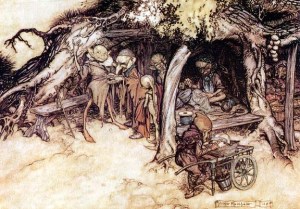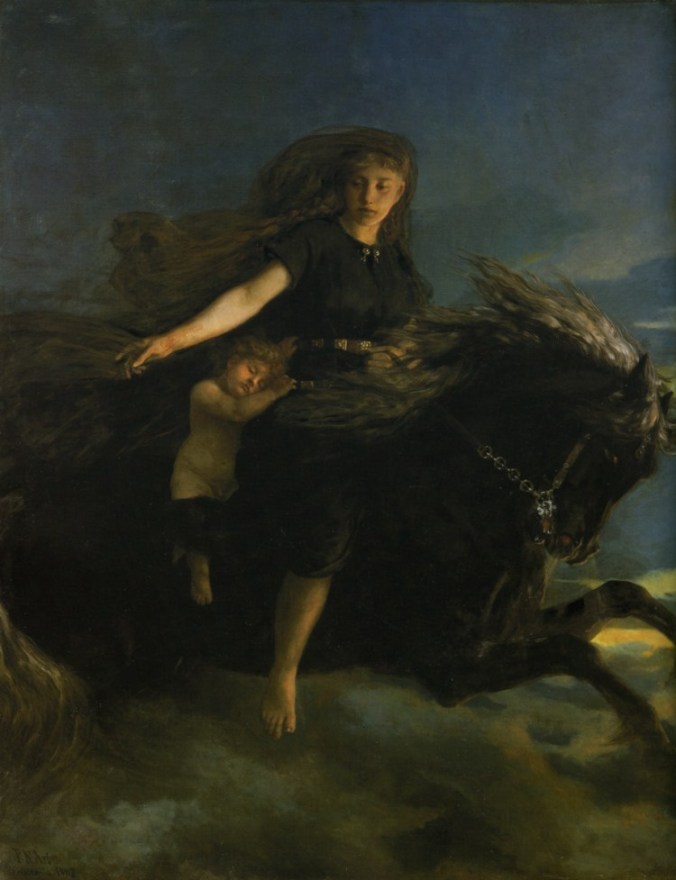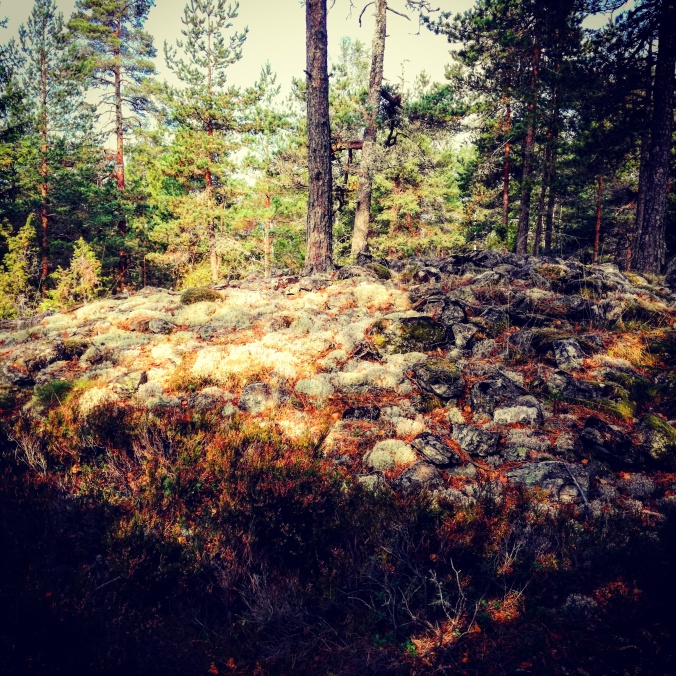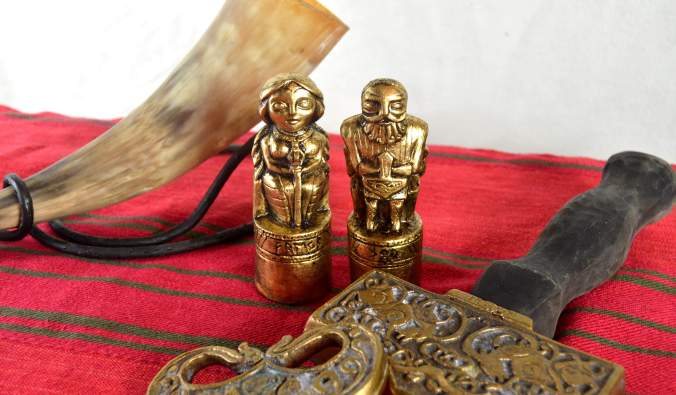
I have two kids and they are being brought up with Heathenry as an integral part of our family. They’ve been at blóts since they were in diapers and while my youngest still is a bit too young, my eldest takes an active part in many blóts and knows the words we’re using often. It probably helps that we celebrate Torshelgd every Thursday, a practice that has been an important part of our family Heathenry since before we had children, and now the children taking part is integral to the ritual. Mostly we celebrate just the four of us, but sometimes my parents or some heathen friends take part. We make sure to hold Torshelgd even when it’s hard, like when we’re in hospital (which we’ve been quite a lot) and it sets the rhythm of our lives and is a source of power and togetherness for us all.
Torshelgd is a weekly practice derived from folk traditions practiced on Thursday evenings at least until the 19th century in rural Sweden. Thursdays have been considered special, magical even, for hundreds of years in folklore; Thursday nights is the time to make pacts with Näcken or the Devil, to learn magic or become an expert fiddler, to heal and cure or to foretell the future. Of particular interest are the taboos concerning circular motions, called “kringgärningar” in Swedish. This especially applies to spinning, but could also apply to painting, making balls of yarn and even going by cart or wagon. Actually, the sheer amount of folklore in Scandinavia surrounding Thursdays is quite staggering. There’s enough for an entire post about it, or even a book, probably.
In pre-Christian times the Thing would often start on a Thursday (Jón Jóhannesson’s “A History of the Old Icelandic Commonwealth: Islendinga Saga”; mentions the Icelandic Alþing and Gulaþing in Norway, I think the Thing in Jämtland did too, but I can’t find the reference) and still today the first day of Summer is always on a Thursday in the Icelandic calendar. Trying to explain why Thor’s day, rather than Odin’s, Tyr’s, Frigga’s/Freyja’s, Sunna’s or Máni’s would be considered especially sacred or important would just be guessing, but the sources do suggest that it has been the case for a long time.
Folklorist Ebbe Schön writes in his “Asa-Tors hammare”, a book that largely deals with the Norse gods in later Swedish folklore, about how Thursdays were observed. The floor of the house needed to be swept and the rooms tidied, because Thore-gud and his wife Frigge (sic) might turn up on that night, and the taboo of circular motions were enforced. A small feast was also prepared.*
Inspired by this and by what I’d read about Samfälligheten för Nordisk Sed (SNS)**, I started observing Thursdays (quite sporadically) about 15 years ago. At first I did it by myself and it was really, really simple; reading a myth about Thor and meditating by the stalli for a little while, usually. After a couple of years a friend of mine, who had Thor as his fulltrui, put together a small blót to do on Thursdays and we started to do them regularly and invited people from our blotlag (hearth/kindred). At first it was mostly a short ritual followed by us going out for beers, but over the course of a few months it morphed into a set “liturgy” inviting Thor and Freyja***, giving them offerings and toasting and then eating a meal. For a while, before we had our first child, my wife and I would do this together with much of the blotlag every week, but eventually we couldn’t fit that work in with a baby so we started celebrating just the three of us. My lovely and talented wife wrote songs to Thor and Freyja****, replacing the texts we’d used earlier to invite them. We have continued to develop how we do Torshelgd over time, mostly to find ways to include our children. The Torshelgds celebrations I’ve attended have varied quite a lot, and while the way my family and I celebrate is fairly ceremony-heavy, I’m sure there are others that do it differently.
It’s hard to say how many Heathens observe this practice, since by it’s very nature it’s mostly a private practice of the home and family. Some members of the SNS probably celebrate Torshelgd, but they also keep themselves to themselves, and to be honest I don’t know that much about their current practices. I do know, however, that the Facebook page “Torshelgd (Thor’s Hallow)” that occasionally reminds people it’s Thursday have over 300 followers, “Väntljusstaken”, which celebrates the six Thursdays leading up to winter solstice, have over 1000 and I also see occasional references to it in other places, like the occasional blog. While most seem concentrated to Sweden, there are quite a few from other places, and it’s clear that it has spread over the last decade. There are few, if any, mentions before the mid-00s, but since the practice is well suited for the way the modern world works, it’s not unlikely it will spread more.
* Schön briefly touches upon whether this was a survival of the preparation for the Friday fast of Catholic times, but seems to lean towards this having to do with Thor: “ we shouldn’t forget that the name of the day became Thursday many hundreds of years before Christianity was ever introduced to us. We’ve had a lot longer to associate the day with Thor than with the Christian custom.”
** A Swedish Heathen organisation mostly dedicated to folkloric Heathenry.
*** Schön mentions “Frigge” in his book, and we had much discussion around whether to invite Frigga or Freyja, which in turn ties in with the whole question of whether they are one goddess or two, and that’s a discussion for another piece.
**** https://soundcloud.com/karin-birka-skogsberg/torss-ngen
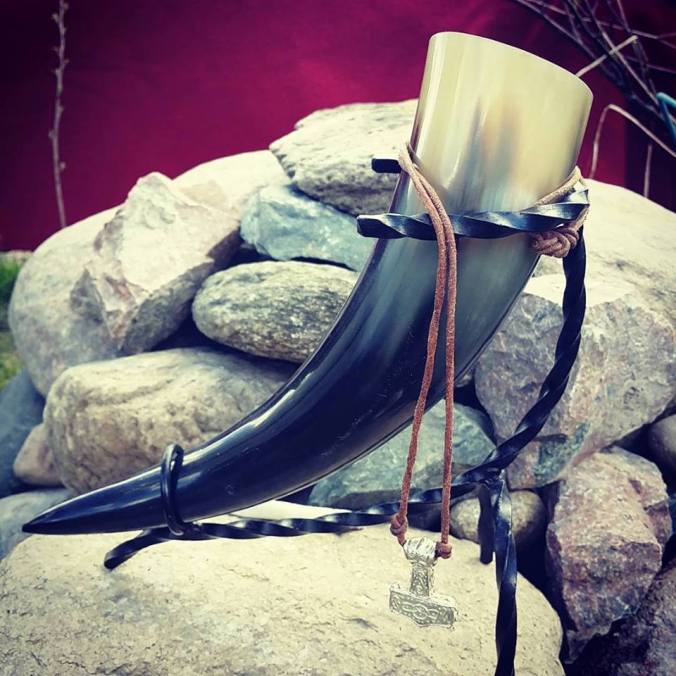 Recently in a Facebook group I’m part of a friend asked the question: “lets say someone is interested in becoming a Nordic Pagan, what advice would you give and what would you suggest to them?”I find this to be an important subject, and how we answer says a lot about what Heathenry is to us. As I’m a Swedish Heathen, there are parts of how I answer that won’t work in other countries – societal and cultural differances may be in the way, or the way Heathenry works there may be too different. Still, I’m going to give this a shot. (Obviously, this isn’t the only way to become a Heathen, if that even needed to be said…)
Recently in a Facebook group I’m part of a friend asked the question: “lets say someone is interested in becoming a Nordic Pagan, what advice would you give and what would you suggest to them?”I find this to be an important subject, and how we answer says a lot about what Heathenry is to us. As I’m a Swedish Heathen, there are parts of how I answer that won’t work in other countries – societal and cultural differances may be in the way, or the way Heathenry works there may be too different. Still, I’m going to give this a shot. (Obviously, this isn’t the only way to become a Heathen, if that even needed to be said…)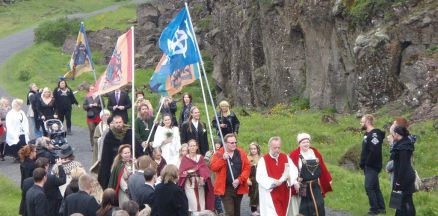 But how to start doing Heathenry then. While it’s strictly speaking true that “you can do it anyway you want”, this is not a very helpful answer. Saying this is meant to validate and empower the person asking to allow them to take responsability for their own connection with the gods, but all too often it’s just confusing and paralysing. Someone that has never seen a blót or anything similar may be at a total loss about what they can do. Because of this I usually advise that they try to find an existing group – blotlag, hearth, kindred – in their area and ask to attend a blót there. Learning from participating in a living tradition of a group that actually practices was the only way for thousands of years. A group that has existed for a few years, at least, will have found ways that work for them and developed relationships with both local spirits and certain gods, which will make it easier for someone starting out on the Heathen path. Even if one does not remain in a group, the experience and practical knowledge gained is invaluable when one practices on one’s own.
But how to start doing Heathenry then. While it’s strictly speaking true that “you can do it anyway you want”, this is not a very helpful answer. Saying this is meant to validate and empower the person asking to allow them to take responsability for their own connection with the gods, but all too often it’s just confusing and paralysing. Someone that has never seen a blót or anything similar may be at a total loss about what they can do. Because of this I usually advise that they try to find an existing group – blotlag, hearth, kindred – in their area and ask to attend a blót there. Learning from participating in a living tradition of a group that actually practices was the only way for thousands of years. A group that has existed for a few years, at least, will have found ways that work for them and developed relationships with both local spirits and certain gods, which will make it easier for someone starting out on the Heathen path. Even if one does not remain in a group, the experience and practical knowledge gained is invaluable when one practices on one’s own. Start simple, very simple, and build from there. Find a place where you can be undisturbed, a place that feels good, and bring a small offering. Find a tree, a lake, a stone that gives you a good feeling, and think of it as a meeting place. A place at which to find and be found. Talk to the place, talk to the gods, and do it out loud if you can. Speak from your heart or write something down in advance, but be personal, this is you introducing yourself to the gods, after all. You may feel silly to begin with, but you’ll get over that efter a while. Speak the names of the gods you want to know, greet them, tell them who you are, and tell them you bring them an offering. Hang it from a branch, throw it in the lake, or leave it on the stone. Or bury it in the ground, or burn it in a fire. I’m sure you can figure out what to do, but remember not to offer something that might be harmful to nature, you’re there worshipping gods that are immanent in nature.
Start simple, very simple, and build from there. Find a place where you can be undisturbed, a place that feels good, and bring a small offering. Find a tree, a lake, a stone that gives you a good feeling, and think of it as a meeting place. A place at which to find and be found. Talk to the place, talk to the gods, and do it out loud if you can. Speak from your heart or write something down in advance, but be personal, this is you introducing yourself to the gods, after all. You may feel silly to begin with, but you’ll get over that efter a while. Speak the names of the gods you want to know, greet them, tell them who you are, and tell them you bring them an offering. Hang it from a branch, throw it in the lake, or leave it on the stone. Or bury it in the ground, or burn it in a fire. I’m sure you can figure out what to do, but remember not to offer something that might be harmful to nature, you’re there worshipping gods that are immanent in nature.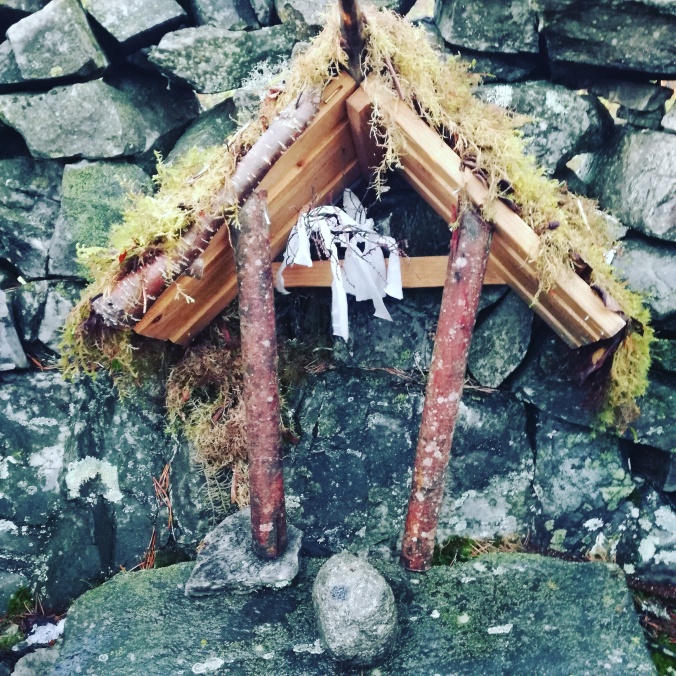

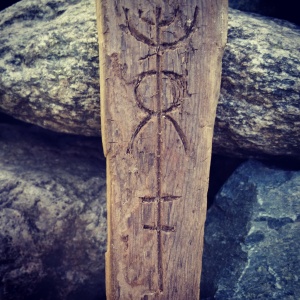



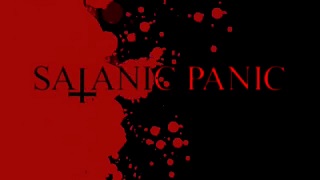 – One shouldn’t forget that there has been persecution of minorities in the US, Gregorious points out and reminds me of the terrible consequences of the Satanic Panic in the 1980ies and 90ies.
– One shouldn’t forget that there has been persecution of minorities in the US, Gregorious points out and reminds me of the terrible consequences of the Satanic Panic in the 1980ies and 90ies.

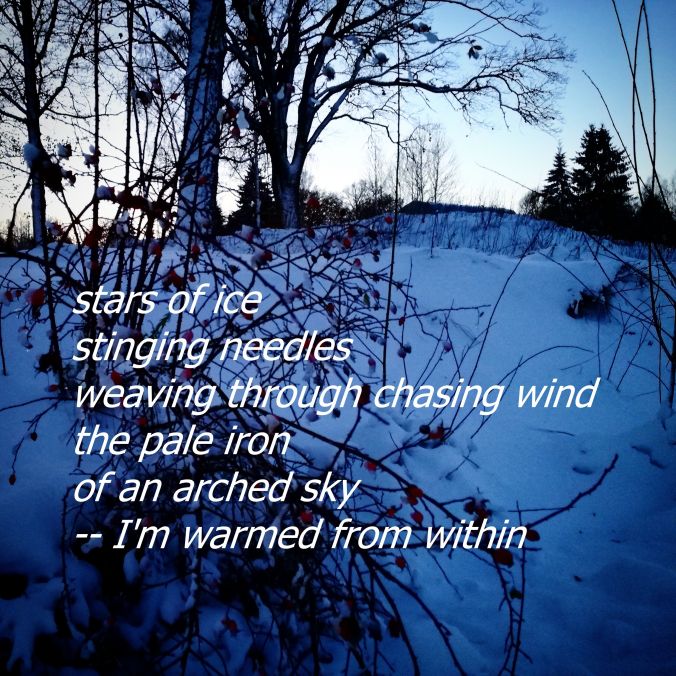
 It’s Halloween season, and eventhough it wasn’t celebrated in Sweden until about 20 years ago it has taken root – scary costums, pumpkins and all. My kids love it, and frankly I don’t mind it either. According to friends of mine, similar traditions existed in some places in Sweden when they were growing up, but were connected with Lucia celebrations in December. It seems obvious that this dark time of the year would make us all think about the scary stuff. Not least about ghosts.
It’s Halloween season, and eventhough it wasn’t celebrated in Sweden until about 20 years ago it has taken root – scary costums, pumpkins and all. My kids love it, and frankly I don’t mind it either. According to friends of mine, similar traditions existed in some places in Sweden when they were growing up, but were connected with Lucia celebrations in December. It seems obvious that this dark time of the year would make us all think about the scary stuff. Not least about ghosts.
